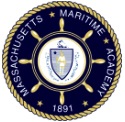MT-4132
Advanced Seamanship
Course Description
Operating a vessel safely and efficiently under all weather conditions requires a skill set for operating and maintaining a vessel and a knowledge of a vessel’s fittings and equipment. Under the supervision of experienced master mariners, students in this program develop seamanship skills through hands-on experience and learn critical thinking and problem-solving skills through the use case studies of marine casualty investigations. This capstone course provides the new deck officer with a strong foundation in the fundamentals of traditional seamanship and exposes the individual to “best practices” in the ever-evolving shipboard technologies and operations necessary to compete in the global marine industry. Topics include search and rescue, damage control, marine salvage, tug and towing fundamentals, ice navigation, anchoring/mooring, ship/helicopter operations, and advanced ship handling techniques. An intensive, hands-on seamanship lab program complements the classroom experience. [Lab time required]
Learning Objectives
Demonstrate knowledge and understanding of the following STCW elements:
- OICNW-A5.3 Appreciation of the procedures to be followed for rescuing persons from the sea
- OICNW-A5.3 Appreciation of the procedures to be followed for assisting a ship in distress
- OICNW-A9.1 the effects of deadweight, draught, trim, speed and under-keel clearance on turning circles and stopping distances
- OICNW-A9.1 the effects of wind and current on ship handling
- OICNW-A9.1 manoeuvres and procedures for the rescue of person overboard
- OICNW-A9.1 squat, shallow-water and similar effects
- OICNW-A9.1 proper procedures for anchoring and mooring
Other Objectives
The student will be able to:
- explain the function and limitations of each component of ground tackle.
- describe the different types of moorings and explain the correct application of each mooring technique.
- calculate optimal length of chain for the prevailing geographic and environmental conditions.
- compute the maximum radius of swing.
- explain the application of controllable forces in shiphandling including: propeller forces, rudder forces, thrusters, auxiliary propulsion units, lines, tugs and ground tackle.
- contrast the advantages and disadvantages of different types of marine propulsion systems.
- demonstrate fundamental shiphandling techniques through the operation of the academy’s small crafts and manned models.
- compute propeller slip and speed by revolution.
- discuss the effects of uncontrollable forces in shiphandling including: hydrodynamic interaction, current, and wind.
- describe the effects of speed, drift angle and pivot point on the maneuvering characteristics of a vessel in both deep and shallow water.
- calculate squat and the maximum transit speed to insure a minimum under keel clearance.
- describe the different attributes of mooring lines based on their respective material, construction, size and length.
- explain the application of different mooring patterns.
- calculate mooring line stress. Gaining hands on experience,
- demonstrate the safe methods of handling mooring lines under heavy loads.
- explain the advantages and disadvantages of different modes of towing. Through hands on operations,
- demonstrate the advantages and disadvantages of maneuvering a tow made up alongside and maneuvering a tow pushed ahead.
- list the actions to be taken immediately after grounding and explain the different methods to refloat a vessel.
- execute basic stranding calculations critical to the early stages of a successful salvage.
- explain the fundamentals of ice seamanship including: types of ice, risks of ice passage, and operating with and without icebreaker assistance.
- identify the hazards inherent in marine helicopter operations and list controls to reduce the risk to personnel.
- list the phases of a search and rescue operation from awareness to mission conclusion.
- discuss the roll of a merchant ship in a coordinated SAR mission.
- based on given parameters, identify the optimal type of search pattern to employ.
Syllabus
- course introduction
- ground tackle review
- anchoring and mooring
- ship maneuvering - controllable effects
- ship maneuvering - uncontrollable effects
- ship maneuvering
- docking and undocking procedures
- tugs and towing
- stranding and salvage operations
- ice seamanship
- helicopter operations
- search and rescue operations
